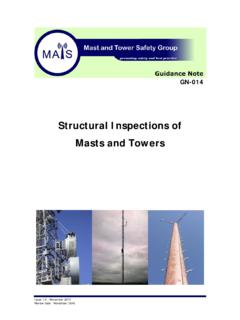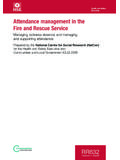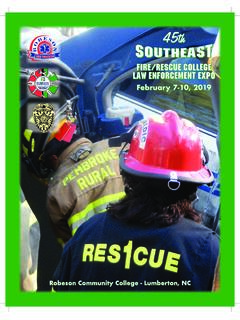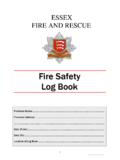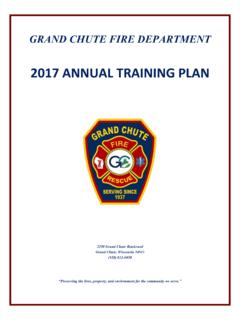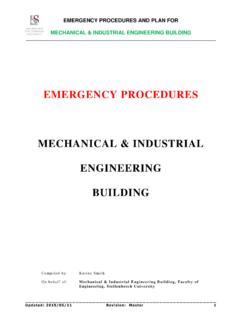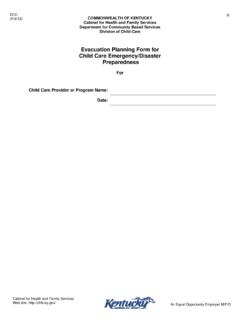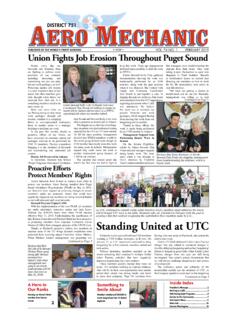Transcription of Mast and Tower Rescue – Guidance for Radio and Rigging ...
1 GN-008. Mast and Tower Rescue . Guidance for Radio and Rigging Teams working on Radio Structures Issue Review date : November 2015. MATS Group Guidance Note Mast and Tower Rescue Guidance for Radio and Rigging Teams working on Radio Structures 1 Introduction This document provides Guidance on Rescue procedures for people who are required to climb masts and towers . It discusses the factors to be considered in any Rescue , and explains some of the equipment available to high climbers with Guidance on some of the Rescue techniques. Please note that the examples and equipment mentioned in this document are illustrative only. There are various types of equipment available and companies should ensure that the equipment they use meets recognised industry and regulatory standards. There are many types and manufacturers of Rescue kit; this document provides examples, but companies need to review their own requirements when making choices about Rescue kit, taking account of factors including the number of people on site, heights that people are working at, types of structures they are accessing, how frequently they climb and the nature of works being undertaken.
2 2 Method Statement, Risk Assessment and Safety Plan All work on Radio structures requires a risk assessment and method statement suitable for the site and tasks to be undertaken. The exact detail required will depend on the magnitude of the task and in some cases the Construction Design and Management Regulations 2007 (CDM2007) will also apply. A. Rescue Plan must also be considered as part of the risk assessment and method statement. The Work at Height Regulations 2005 (WAH Regulations 2005) require that a Rescue plan is in place before work begins. Remember there is no safe system of work without a means of Rescue . 3 Minimum Rescue kit requirements As a minimum a Rescue kit for one to one Rescue should be available on site at all times when climbers are working at height. This is a Rescue kit that can be used by one person to Rescue another, whether a casualty on a working platform or a casualty suspended from open steelwork.
3 4 Provision of Rescue Equipment It is the responsibility of the climber's line manager to ensure that all climbing teams are equipped with sufficient and suitable Rescue equipment based on the task and geographic location. Managers of contractors who are required to access masts and towers must provide their staff with appropriate Rescue kits. The following factors should be considered when deciding on the deployment of equipment: An appropriate Rescue kit should be available on site and the equipment must be kept together rand be ready for deployment at all times. A one to one Rescue kit must be available on site if any work is taking place on a Radio structure (mast or Tower ). An appropriate full Rescue kit (which may include one to one kit and a stretcher) should be available on site if a full Rigging team of four or more people is working at height or if this requirement is specified by a customer.
4 No Rescue kit is generally required for work undertaken on flat roofs although Rescue kit would be required if a mast or stub Tower exists on a roof-top or elevating platform. Before work on any structure begins, consideration should be given to: Lifting the Rescue equipment to the place of work, and Issue MATS Group Guidance Note GN-008 page 2 of 9. Review date : Nov 2015 Mast and Tower Rescue Guidance for Radio and Rigging Teams working on Radio Structures Ensuring that the whereabouts of Rescue kits is known. All aerial riggers and Radio installation/maintenance engineers who are in possession of a Rescue kit need to ensure that their employer is aware of their whereabouts. Anyone requiring assistance will then be able to make contact with the company to ensure that the nearest additional Rigging / Radio personnel can be deployed to assist in the shortest possible time.
5 5 Priorities The order of priorities for the rescuer/ Rescue team is to: raise the alarm not to endanger themselves prevent further injury to the casualty move the casualty to the ground or a safe position as soon as possible so that essential and effective treatment may be administered. In all cases the emergency services must be the first point of contact to ensure that medical help is on hand as soon as possible. 6 Training Whenever possible an experienced trained rigger should lead a Rescue . It is important in any Rescue scenario that one person takes overall control and communicates as necessary with the emergency services. All Radio climbers must hold a current emergency aid certificate. All climbers should be trained to carry out one to one rescues. Climbers must not work alone. There must be a minimum of two climbers on site at all times in case a one to one Rescue is necessary.
6 7 Size of Rescue Party One to one Rescue requires one trained person to Rescue another. One to one Rescue can be used, for example, for Rescue from a monopole. Use of a stretcher such as Paraguard or Chrysalis requires a minimum of three trained riggers (not including the casualty). All Rescue operations will benefit from additional people being present to assist, but it is important that one person takes charge of the Rescue operation. 8 Communications A Rescue plan should include a suitable communications method to summon help. In the event of an accident the first duty of the person in charge is to ensure that a doctor and an ambulance have been summoned. Suitable communication systems include land lines, mobiles and Radio . In all cases the communications system must be tested before work starts.
7 9 Emergency services Whilst the fire brigade are Rescue professionals, they are not always equipped to access tall structures and may not have suitable equipment for recovering a casualty. However they do have turntable ladders and, assuming normal vehicular access, can often recover a casualty quickly using these. This could be, for example, where the casualty has been recovered to a safe place on the structure and a turntable ladder could be used to lower them to the ground. A medical professional (paramedic or doctor) may need to reach the casualty in order to stabilise them before any recovery is attempted. If the casualty has been suspended for any length of time the paramedic or doctor should be made aware of this and precautions will need to be taken in the event of suspension intolerance or syncope.
8 Issue MATS Group Guidance Note GN-008 page 3 of 9. Review date : Nov 2015 Mast and Tower Rescue Guidance for Radio and Rigging Teams working on Radio Structures 10 Casualty management It is essential that all rescuers have up to date first aid training. A casualty having survived a fall may be at significant risk from his/her injuries and correct management may save their life. If a casualty has taken a fall and is left unconscious and suspended then there is a high risk from suspension intolerance and they should be rescued as quickly as possible. A suspended immobile person could die in as little as 30 minutes. See Section 13 below for further information. If the casualty is conscious it is important to reassure them. Explain what you are doing and monitor their level of consciousness at all times.
9 If they are uninjured encourage them to move their legs and if possible take their body weight on a bracing or any surrounding steel - this will help to prevent the onset of suspension intolerance. A close working attachment may be fully extended and used as a form of stirrup to enable them to flex leg muscles. Flexing muscles in the legs will help maintain blood circulation and offset the effect of suspension intolerance. 11 Selection of a Suitable Anchorage Before work begins and at each change of job/task on a structure, an assessment should be made of the form of Rescue that can be made (see BS7985 : 2009 Clause ). In any Rescue plan (which must be completed before starting the task on the structure) careful consideration must be given to ensuring that a suitable anchorage point above the workplace is available.
10 This would be used by the rescuer and casualty during a Rescue and will be supporting the weight of two people in the case of a one to one Rescue . It is possible that the exact position of the anchorage will need be chosen at the time of the Rescue but it is essential that an attachment point is available above the casualty to enable equipment to be deployed. Never attach to hand railing. Use only substantial structural members - primary or secondary strong points if possible. If a Rescue attachment point is provided and it can support 2 persons, use it. Welded lugs are not strong points - unless marked as a Rescue point. Steps on monopoles are not strong points. If in doubt use a round sling (provided in kit) and wrap around structural steel sections avoiding sharp edges. It is permissible to choke the round slings provided, but they must be inspected for signs of damage after the Rescue .
